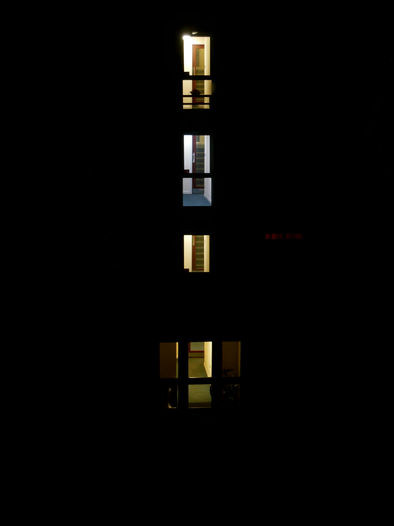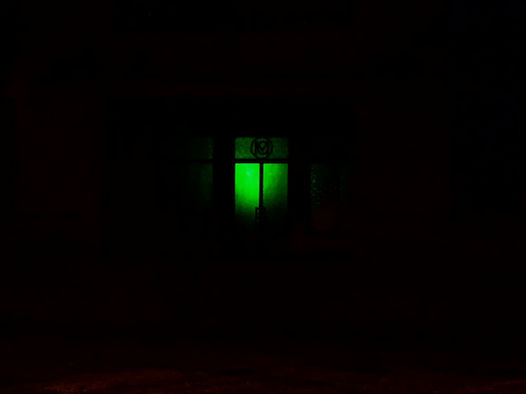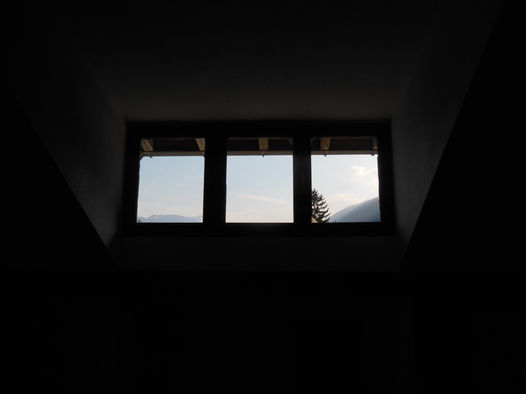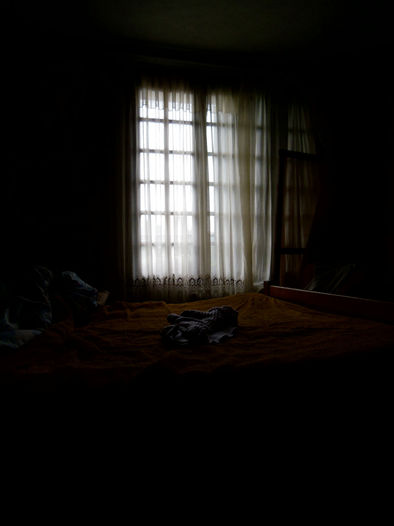
VINDAUGA
« We want to look out of houses, but tend to fear [what is] looking in. »
Philippa Lewis - Portals


« Window » comes from old Norse Vindauga, composed by Vindr : Wind and Auga : Eye, meaning « Wind Eye »
« Fenêtre » comes from latin fenestra meaning : crossing, opening.
I can't tell exactly how long I have been obsessed by doors and windows, but it's been a long time, and not an common hobby. Throw back in 2018, sorting my photos, I noticed a recurrence : doors, holes, screens, crossings, portals, frames, windows...
From past castles, to our modern skycrapers, including computers, windows are everywhere, and keep acting like a threshold.
Path for the steam, the wind or the threat in the arrowslit, way of the virtual information, of light, and sight.
Those apertures show the potential of what's they're hiding, revealing or reflecting. As an ajar door in the middle of the night, they're the limen of a possible adventure, a call from the unknown. The crossing is two-way, and shift according to the watcher's gaze. So, as Philippa Lewis recalls in her book Portals : « At night, the effect of a window is reversed ». What's inward and hidden during the day is now exposed, as the outside becomes obscure. The night reverses the esoteric aspect of windows : the watcher from the inside doesn't see anything, whereas the outside can observe him fully. It's the same story again ; light and darkness, parallel worlds, what enters in and what can comes out ; and the bound of those worlds could be the mirror, the rabbit-hole, the door, or the window.
This serie gathers the windows I met in my everyday life ; as a collection work, it is also a search i'm still working on, while looking for an other way to show it, learning from Clarissa Bonet and her Stray Light serie. Despite the title, there's doors in the photos, meaning they have sometimes the same potential power, even if they represent a gate that could be physically crossed. Windows are the wind eye, what couldn't be reached, frustrating us allowing only our gaze and mind to go through. In the same way Disney's Alice enters to Wonderland after looking through the keyhole of its impassible door.
« Doorknob: No, impassible. Nothing’s impossible! »
Alice in Wonderland, Walter Disney 1951
« Window », vient du vieux Norrois Vindauga, composé de vindr : vent et auga : œil et signifiant « Œil du Vent ».
« Fenêtre » vient du latin fenestra signifiant : Ouverture, Passage.
Je ne saurai dire depuis quand je suis fascinée par les fenêtres et les portes, sûrement depuis longtemps, mais ce n'est pas une passion évidente. C'est en triant mes photos en 2018 que j'ai remarqué la récurrence : portes, ouvertures, trous, fenêtres, écrans, portails, cadres, seuils...
Des châteaux d'autrefois, à nos immeubles d'aujourd'hui en passant par notre ordinateur, les fenêtres sont partout, et agissent encore comme un seuil.
Passage de la fumée du foyer, du vent, ou de la flèche à travers la meurtrière, passage de l'information virtuelle, de la lumière et du regard.
Ces ouvertures représentent la potentiel de ce qu'elles cachent, révèlent, ou reflètent. À la manière d'une porte entrouverte dans la nuit, elles sont le seuil d'une possible aventure, une invitation vers l'inconnu. Une traversée à double sens, qui se transforme selon la position de l'observateur. Ainsi, dans son livre Portals, Phillipa Lewis nous rappelle que l'effet des fenêtres s'inverse la nuit ; l'intérieur caché pendant le jour, est révélé en pleine lumière, alors que l'extérieur devient obscure. La nuit inverse la dimension ésotérique de la fenêtre : celui qui regarde de l'intérieur ne voit plus le monde, mais le monde voit ce qu'il cache. Il s'agit encore d'une histoire d'ombre et de lumière, de mondes contraires, et de ce qui peut y entrer ou en sortir ; et la paroi de ces mondes, c'est le miroir, le terrier du lapin, la porte et la fenêtre.
Cette série rassemble les fenêtres rencontrées dans mon quotidien ; travail de collection et à la fois de recherche, je continue à l'alimenter, tout en réfléchissant en parallèle à un moyen de la mettre en forme virtuellement, à la manière de Clarissa Bonet dans sa série Stray Light. Si malgré le titre on y retrouve quelques portes, c'est parce qu'elles offrent la même source de possibilités même si on peut les traverser physiquement. Les Fenêtres restent l'Oeil du vent, ce qui est inaccessible et nous frustre en ne laissant passer que notre regard et notre esprit. De la même façon, Alice de Disney entrera dans le Pays des Merveilles après avoir regardé à travers la serrure de sa porte impassable.
« Poignée de porte : Non, impassable ! Rien n'est impossible ! »
Alice au Pays des Merveilles, Walter Disney 1951































